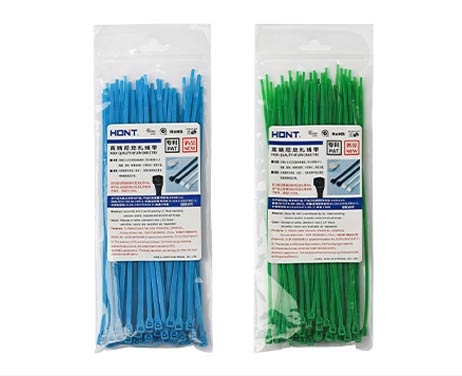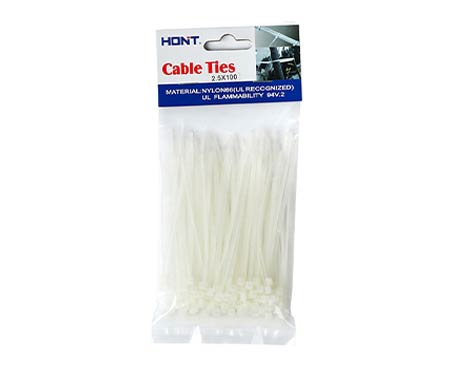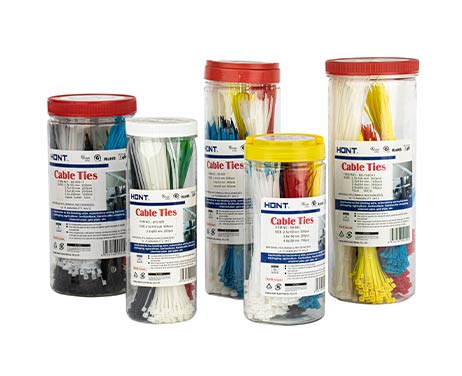Tel
0577-62795555
Tel
0577-62795555
The beauty of nylon cable wire provided by cable tie wholesale suppliers is that they are easy to use. Just insert the tip of the nylon zip tie into the locking piece; It's usually a square tip of a nylon plastic cable tie, and the tip of the nylon cable zip tie is designed to have a hole that goes through the clasp, and it can only work one way.
Cable ties, also named wire ties, serve as fasteners that bundle your nylon cable ties and nylon wire ties together to keep them organized and prevent damage. Cable ties nylon come in different sizes, lengths, materials, and even colors. Specific application fields of nylon ties such as China nylon cable ties include transportation, telecommunications, speaker wires, and home theatre/equipment. Plastic cable ties are constructed for indoor and outdoor use and vary in composition.
Wrap the length of nylon cable tie zip around the cables you want to bundle together. Insert the ridge of the first nylon plastic zip into the opening of the most recently added nylon plastic cable tie in the sequence to create a loop. Tighten your nylon ties, using as much as you can to keep the ties tight.

The first is most common packing - bag packing, with our custom label or standard label. In this packing, Hont can produce nylon wire tie all by full automatic production line, each line capacity is 5000bags per day, which further lowers the production cost.

The second one is headcard packing, this one most purchase by customer sell in supermarket or retail, can be hand in the shelves and present the product info.

The third one is bottle packing, which has 3 to 5 different sizes of cable tie with different colors, This is more favorable by homeowners who have different uses range needs.
Different Types of Cable Ties
Nylon Cable Ties:
Material: Nylon cable ties are the most common and widely used. They are made of durable nylon and are available in various lengths, widths, and tensile strengths.
Applications: Used in a wide range of applications for organizing cables, securing bundles, and attaching objects.
Heat Stabilized Cable Ties:
Material: Similar to nylon cable ties, but with added heat resistance. Heat-stabilized ties are designed to withstand higher temperatures without becoming brittle.
Stainless Steel Cable Ties:
Material: Made from stainless steel, providing excellent strength and resistance to corrosion.
Applications: Commonly used in harsh environments, such as marine, industrial, or outdoor settings where corrosion resistance is essential.
Releasable Cable Ties:
Design: Releasable or reusable cable ties have a tab or mechanism that allows them to be released and reused. They are not permanently closed like standard cable ties.
Applications: Useful in situations where adjustments or changes to the bundled items are anticipated.
Mounting Cable Ties:
Features: Mounting cable ties have a built-in mounting hole or base, allowing them to be attached to surfaces using screws or other fasteners.
Applications: Used for securing cables to walls, ceilings, or other surfaces.
How to Choose Cable Ties
Choosing the right cable ties involves considering various factors to ensure they meet the specific requirements of your application.
Material:
Consider the environmental conditions. For standard applications, nylon cable ties are commonly used. For harsh environments or outdoor use, consider stainless steel or UV-resistant ties.
Tensile Strength:
Determine the weight and size of the cable bundle. Choose cable ties with an appropriate tensile strength to support the weight and provide secure bundling.
Length and Width:
Select the right length based on the size of the cable bundle. Ensure the width is adequate for the strength required.
Heat Resistance:
In applications where cables may be exposed to high temperatures, opt for heat-stabilized cable ties to prevent them from becoming brittle or degrading.
Corrosion Resistance:
If the application involves exposure to corrosive elements, such as in marine or industrial settings, consider using stainless steel cable ties for their corrosion resistance.
Releasable vs. Non-Releasable:
Decide if you need the cable ties to be releasable for future adjustments or if a permanent, non-releasable tie is sufficient.
Mounting Features:
If you need to attach the cable ties to surfaces, choose cable ties with built-in mounting holes or bases for easy installation.
Hont cable tie can be used outside for one year longer.
We have a reuseable kind of cable tie for you to choose from.
Depending on the kind of cable tie, a reusable one can be undo, self locking nylon cable tie just one time.
Yes, we can provide UV-0.
No, we ues 100% PA66 which is from Ascend and Invista.
Pa6 cable tie you will find it only good when it is recently produced, but soon you will find broken, yellowed, or very soft. Our PA66 cable tie we have 1 year warning time guarantee.
News & Topics at Hont Cable Ties